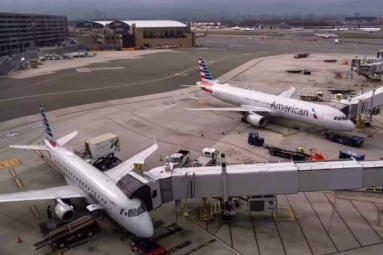
(Image source from: AZCentral.com)
On Tuesday morning, Phoenix passengers on American Airlines flight 682 to Orlando on had the rare opportunity to experience "new airplane smell" as they were the first passengers to ride on American Airlines’ newest addition to its fleet: the Airbus A321neo.
After receiving approval from the FAA, American Airlines put the new plane into service on the 8:45 a.m. April 2 flight. The sticker price is $129.5 million, though airlines typically negotiate discounts when they buy in bulk.
The plane is part of Airbus' A321 line and the "neo" stands for "new engine option." According to Airbus' website, the aircraft has trademarked fuel-saving wingtips called “Sharklets” and two new engine choices that deliver "per seat fuel improvements of 20 percent, along with an additional range of up to 500 nautical miles/900 km. or 2 tonnes of extra payload."
Those fuel-savings specs might be lost on most passengers, but people will notice the upgraded amenities such as high-speed WiFi, power outlets at every seat and built-in holders for tablets and phones.
Tyler Herrick, an American Airlines flight attendant responsible for helping train crews on the features of the new aircraft, said the airline took flight attendant feedback into account when designing the interior.
"We gave them bigger galleys. We gave them bigger aisles. We gave them bigger (luggage) bins, too. It’s mutually beneficial for the customer and the flight attendant," Herrick said.
American has ordered 100 of the A321neo planes and plans eventually to use them on routes including Phoenix to Hawaii. A lot of that depends on when the airline receives additional planes.
"As we get more, we’ll add more routes. Right now we’re staring with Phoenix and Orlando. We’ll be adding routes like Anchorage and Hawaii as more of those planes arrive," said Joshua Freed, spokesman for American Airlines.
The airline has been performing required tests to prove to the FAA that it can operate the aircraft over water. It hopes to have the A321neo certified for the Phoenix to Hawaii route in time for the busy winter travel season.
By Sowmya Sangam






















